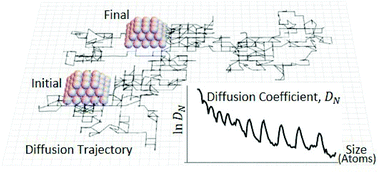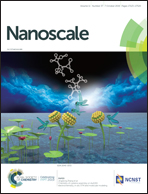Complex oscillatory decrease with size in diffusivity of {100}-epitaxially supported 3D fcc metal nanoclusters†
Abstract
Diffusion and coalescence of supported 3D metal nanoclusters (NCs) leads to Smoluchowski Ripening (SR), a key pathway for catalyst degradation. Variation of the NC diffusion coefficient, DN, with size N (in atoms) controls SR kinetics. Traditionally, a form DN ∼ N−β was assumed consistent with mean-field analysis. However, KMC simulation of a stochastic model for diffusion of {100}-epitaxially supported fcc NCs mediated by surface diffusion reveals instead a complex oscillatory decrease of DN with N. Barriers for surface diffusion of metal atoms across and between facets, along step edges, etc., in this model are selected to accurately capture behavior for fcc metals. (This contrasts standard bond-breaking prescriptions which fail dramatically.) For strong adhesion, equilibrated NCs are truncated pyramids (TP). Local minima of DN sometimes but not always correspond to sizes, NTP, where these have a closed-shell structure. Local maxima generally correspond to N ≈ NTP + 3 for N = O(102). For weak adhesion, equilibrated NCs are truncated octahedra (TO), and local minima of DN occur for sizes close or equal to those of just a subset of closed-shell structures. Analytic characterization of energetics along the NC diffusion pathway (which involves dissolving and reforming outer layers of facets) provides fundamental insight into the behavior of DN, including the strong variation with N of the effective NC diffusion barrier.



 Please wait while we load your content...
Please wait while we load your content...